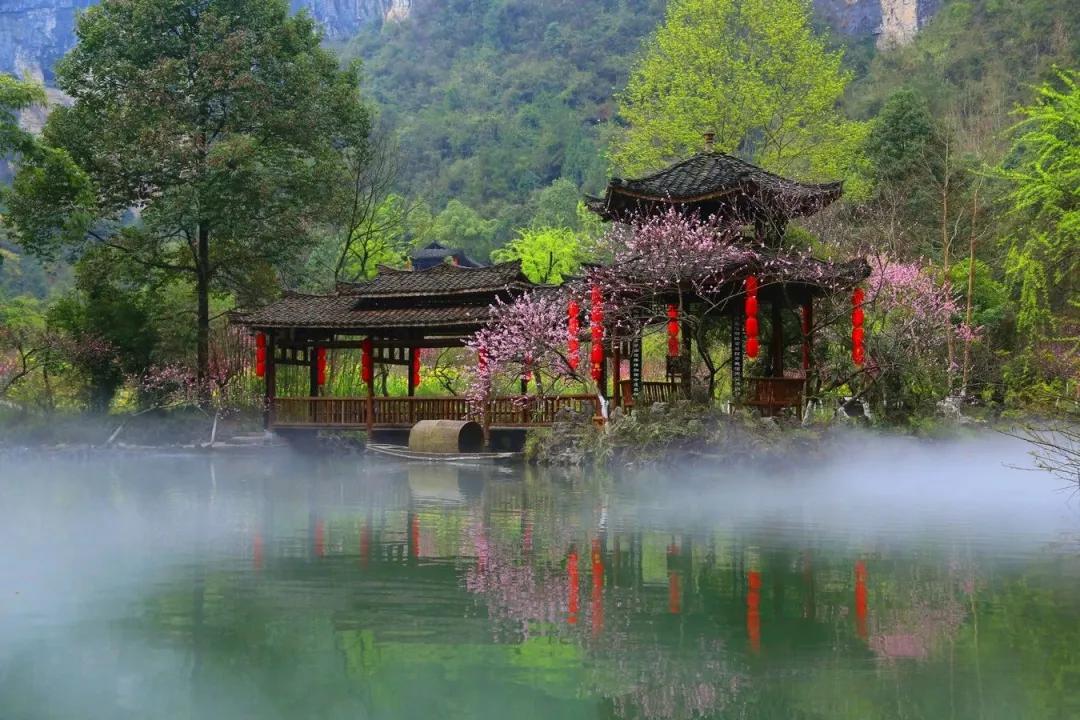1、Youyang Peach Blossom Spring
Youyang Taohuayuan is a national 5A-level tourist attraction and the cultural prototype of Tao Yuanming’s “Taohuayuan”. The planned area of the scenic area is 10.8 square kilometers, and the core scenic area is 2.2 square kilometers. It consists of the ancient Taoyuan, Taigu Cave, Youzhou Ancient City (Chinese Food Street), Taohuayuan National Forest Park, etc. It integrates karst geological wonders, Qin and Jin farming culture, Tujia folk culture and natural ecological culture. It is a tourist destination for modern people to get away from the hustle and bustle of the world, step into the Qin and Jin countryside, explore geological wonders, and return to the green paradise.
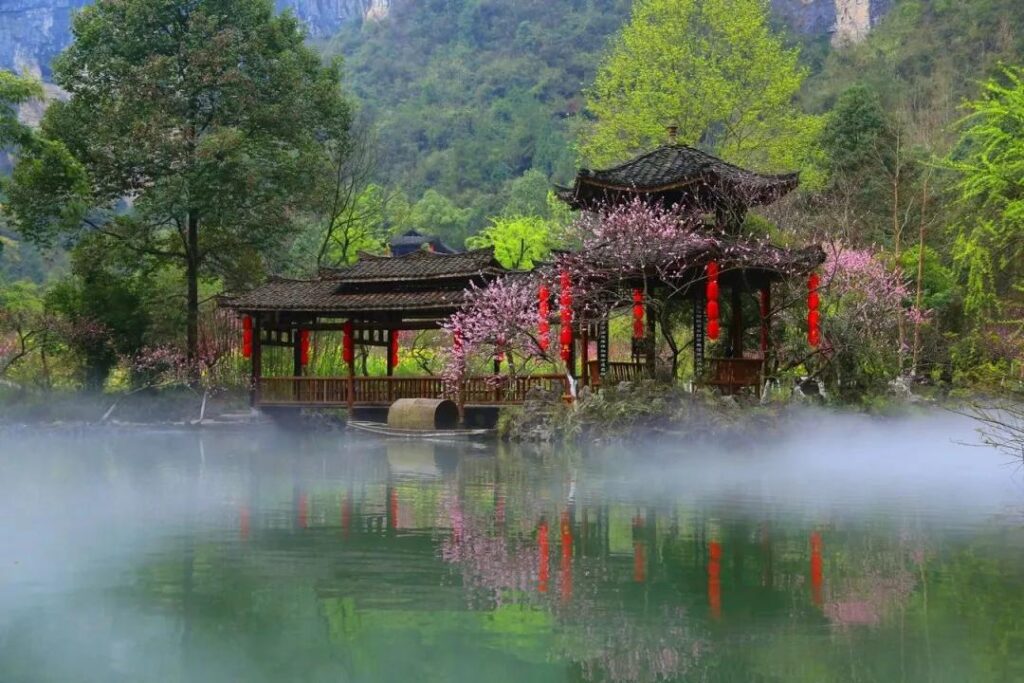
The Ancient Taoyuan is based on the novel “Peach Blossom Spring”. It plans and arranges “one temple and four villages” including Taogong Temple, Wuliu Village, Jingjie Village, Yinyi Village and Qian Village, as well as business formats such as wine and food shops, and farming life scenes. It reproduces the paradise-like mood of “peach trees on both sides of the bank, flat land, neat houses, fertile fields and beautiful ponds, and interconnected paths”. The park preserves and inherits the unique and complete folk culture such as Tujia waving dance, Youyang folk songs, Muye love songs, and Xilankapu.
2、Gongtan Ancient Town
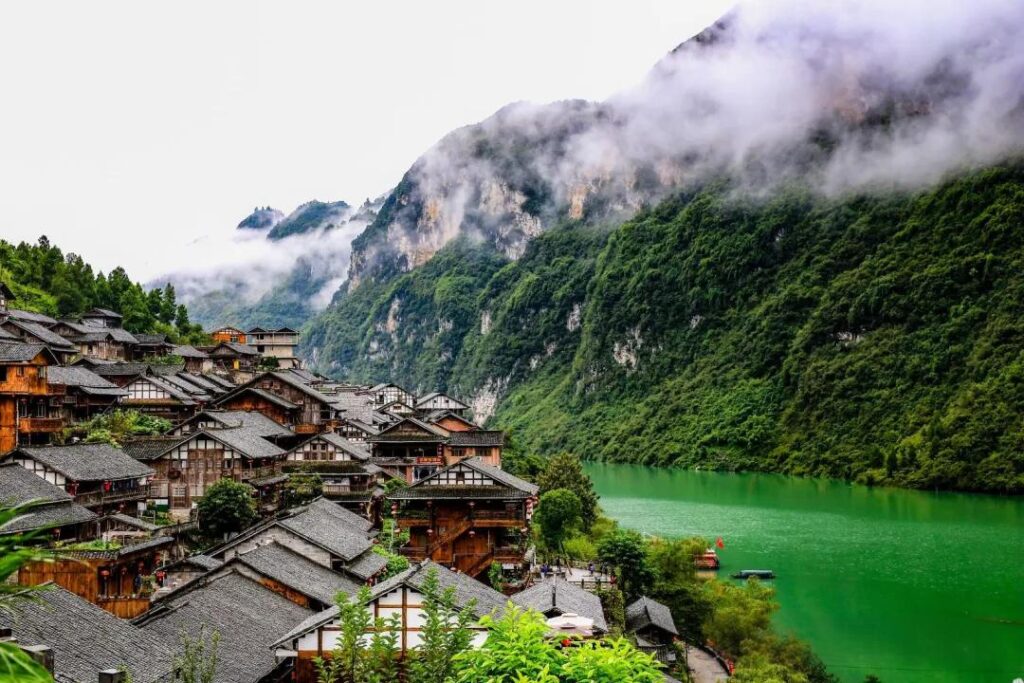
Gongtan Ancient Town has a history of more than 1,800 years. It is a famous historical and cultural town in China, the first historical and cultural town in Chongqing, and a national 4A-level tourist attraction. It is a model of the integration of culture and tourism. The ancient town currently has a 1.3-kilometer-long stone street and more than 400 Tujia stilt houses. There are many scenic spots such as the Ran Family Courtyard, the Xia Family Courtyard, the Dong Family Ancestral Hall, the Xiqin Guild Hall, the Chuanzhu Temple, and the Sanfu Temple. The architectural style is unique and the cultural connotation is very rich. The Chinese painting master Wu Guanzhong praised it as “Tang Street, Song City, and the home of grandparents”. Relying on historical culture, ecological nature and ethnic customs, the scenic spot strives to create three major brands of “intangible cultural heritage town”, “flower town” and “art town”, and was selected as one of the “top ten ancient villages and towns most loved by netizens nationwide”.
3、Longtan Ancient Town
Longtan Ancient Town was built along the Meishu River. It is large and well-preserved. The existing 3-kilometer stone slab street has been polished to a mirror-like shine and is as green as jade. Ancient marine fossils appear from time to time. More than 50 Tujia stilt houses have upturned corners and flying eaves, and are beautiful in shape. There are many shops on the street, and the alleys are interconnected. The beacon walls are fortified and magnificent. The quadrangle is simple and quiet, and quite distinctive. It is the seat of “County Magistrate”, “Inspector”, “State Tong” and “County Assistant”. It was known as “Little Nanjing” and “Huolongtan” in ancient times.

Since ancient times, the Meishu River has been a major passage connecting the Youshui River to the Yuanjiang River and leading to Jiangsu and Zhejiang. Since the abolition of the Tusi system in the late Yongzheng period and the cancellation of the ban on “barbarians not leaving the cave and Han people not entering the country”, merchants from Jiangsu, Zhejiang, Huguang, Chongqing and other places have gathered in Longtan Ancient Town, transporting large quantities of salt, cloth and other daily necessities, and transporting special products such as tung, tea, lacquer, cinnabar, and mercury. The ancient town is full of salt shops, business houses, and shops, and is known as the “Longtan of Goods”. The Jiangxi Merchants’ Guild Hall Wanshou Palace and the Hunan Merchants’ Guild Hall Yuwang Palace were established one after another, promoting the integration of local ethnic minorities and the Han people. During the Anti-Japanese War, Longtan Ancient Town became the rear base for people in the occupied areas to avoid the war. The 1.5 square kilometer town was crowded with 80,000 people, and merchants gathered, making Longtan famous throughout the country and known as the “Little Nanjing”.
4、Former Residence of Martyr Zhao Shiyan
The former residence of Martyr Zhao Shiyan is located in Longtan Town, Youyang Autonomous County, Chongqing. It was built in 1902. It is a brick-and-wood courtyard, a model of the combination of Huizhou architecture and southern railing-style architecture. The former residence covers an area of 1,605 square meters and a building area of 710 square meters. Above the door, there is a plaque inscribed with “Comrade Zhao Shiyan’s Former Residence” by Comrade Deng Xiaoping in 1982. Zhao Shiyan was an outstanding proletarian revolutionary in the early days of the Communist Party of China, an outstanding disseminator of Marxist theory, a famous leader of the workers’ movement, and one of the founders of the Communist Party of China.
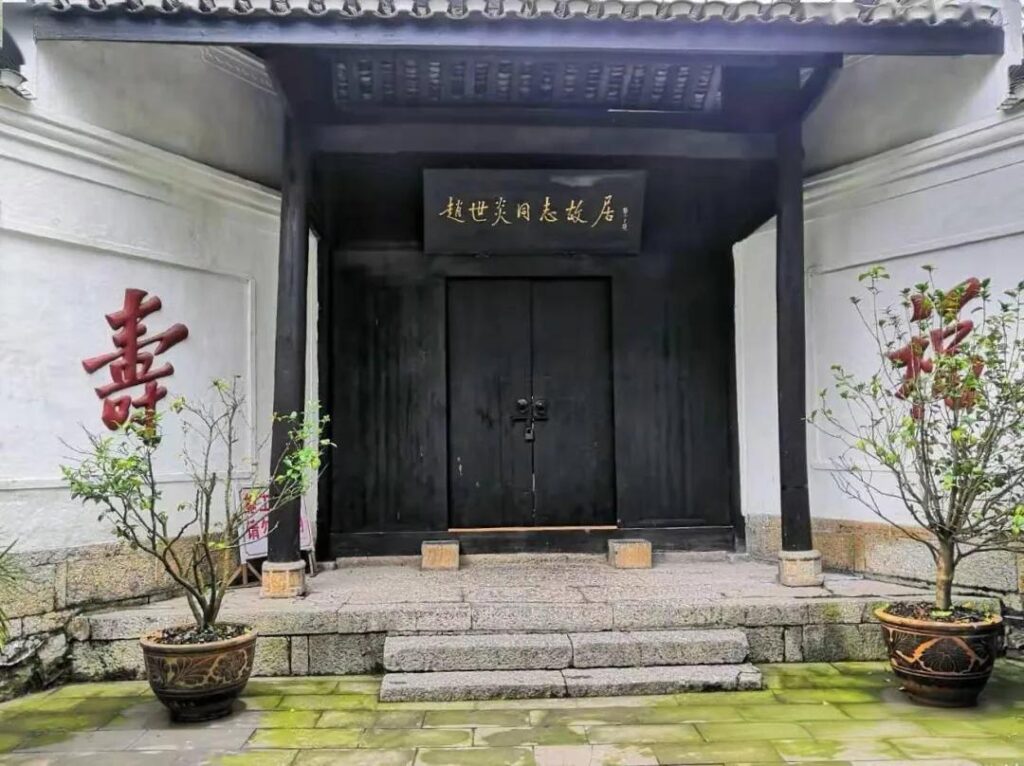
When Youyang Autonomous County was established in 1983, the former residence of Martyr Zhao Shiyan was restored and opened to the public. It has undergone three renovations, expansions and restorations in 1990, 2001 and 2010, and newly built the Zhao Shiyan Martyr Exhibition Hall, Visitor Reception Center, and Memorial Square. There are 113 cultural relics in the former residence of Martyr Zhao Shiyan that have been registered, among which the rattan box used by Martyr Zhao Shiyan when he studied in France is a national third-level cultural relic, and there are more than 400 collections of famous paintings and calligraphy, precious audio-visuals, pictures, and text materials.
5、Valley of Stones
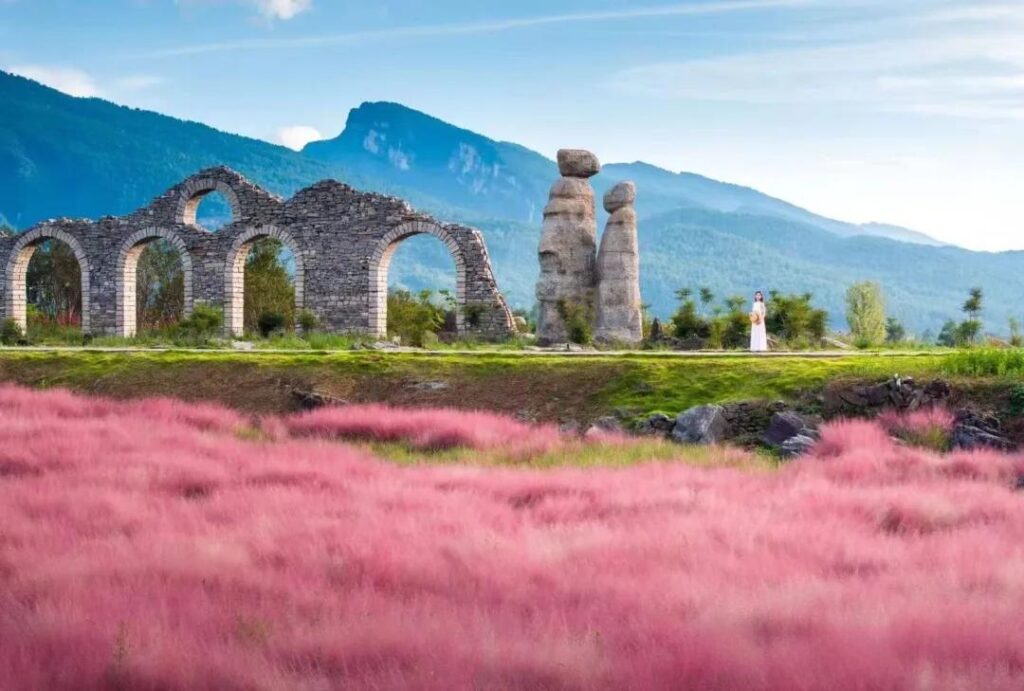
With the theme of rural revitalization, the Dieshi Flower Valley makes full use of China’s oldest and most primitive traditional culture – Nuo culture and 500 million-year-old stromatolite resources to create a 1,000-acre stacked stone art landscape and a romantic pink flower sea, a 1,000-acre rural art park, and a 1,000-acre folk village with more than 500 households. It has explored a new path of “tourism promotes development and art revitalizes the countryside”, turning the desert into a “gold mountain and silver mountain”, and effectively promoted the rural revitalization of the region. Zhaying Village, where the scenic spot is located, was selected as the second batch of national key rural tourism villages and the second batch of geological cultural villages to be built. It was successfully established as a national 4A-level tourist attraction in 2022. The scenic spot and surrounding farmers have achieved annual income growth through land transfer, employment, sales of agricultural products, and the development of characteristic catering and accommodation, which has a far-reaching impact on driving regional economic and social development.
6、Flower Field Terraces
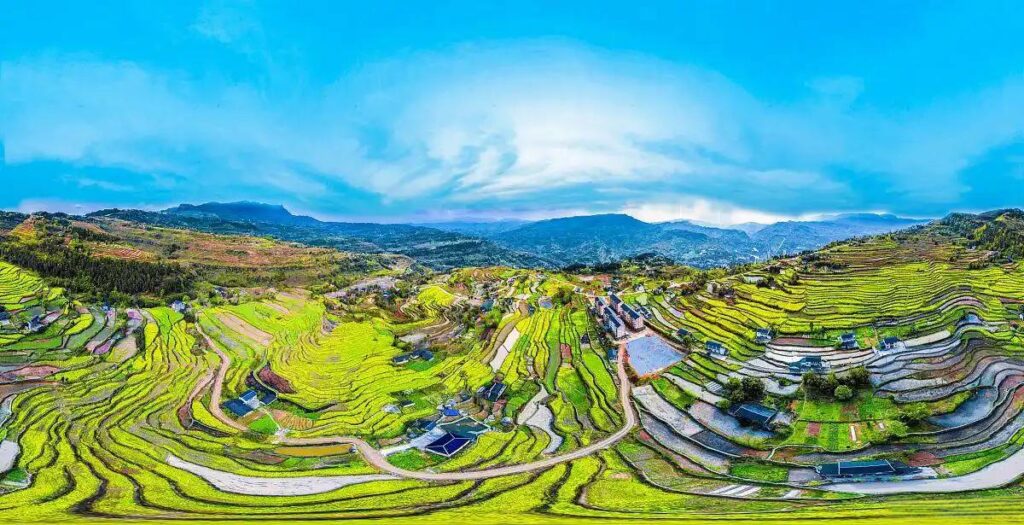
Huatian Terraces National 4A-level Tourist Scenic Area is located in Huatian Township, Youyang County, 37 kilometers away from the county seat, with an average altitude of 800 meters and an average annual temperature of 14.2℃. The scenic area mainly includes 10,000 mu of terraces, Hejiayan Ancient Village, Linya Observation Deck, Qingshi Baixiang Rock and other attractions. Huatian Terraces currently has 99 levels of magnificent terraces, known as “Pearl in the Deep Mountains, Fairyland on Earth, Paradise in Painting”, and is a Chinese folk photography creation base. Hejiayan Ancient Village is a traditional Chinese village and “China’s Beautiful Leisure Village”. There are more than 100 characteristic homestays and farmhouses, as well as land art created by art masters, Mingde Academy, Linya Coffee, Village History Museum and other rural experience spaces, allowing tourists to experience the taste of Huatian in the dreamlike terraced scenery, the original farm atmosphere, and the natural works of art.
7、Squirrel Jungle Paradise
Squirrel Jungle Park relies on the ecological advantages of high green plant coverage density and high negative oxygen ion concentration of Taohuayuan National Forest Park, gives full play to the geographical advantages of being close to the county town and scenic area, focuses on the development concept of turning “forest mountain” into “gold mountain”, and follows the development idea of ”close to nature, family and parent-child”, to create a folk eco-tourism destination with tourists within 300 kilometers as the main target group and a parent-child entertainment highland in southeastern Chongqing.
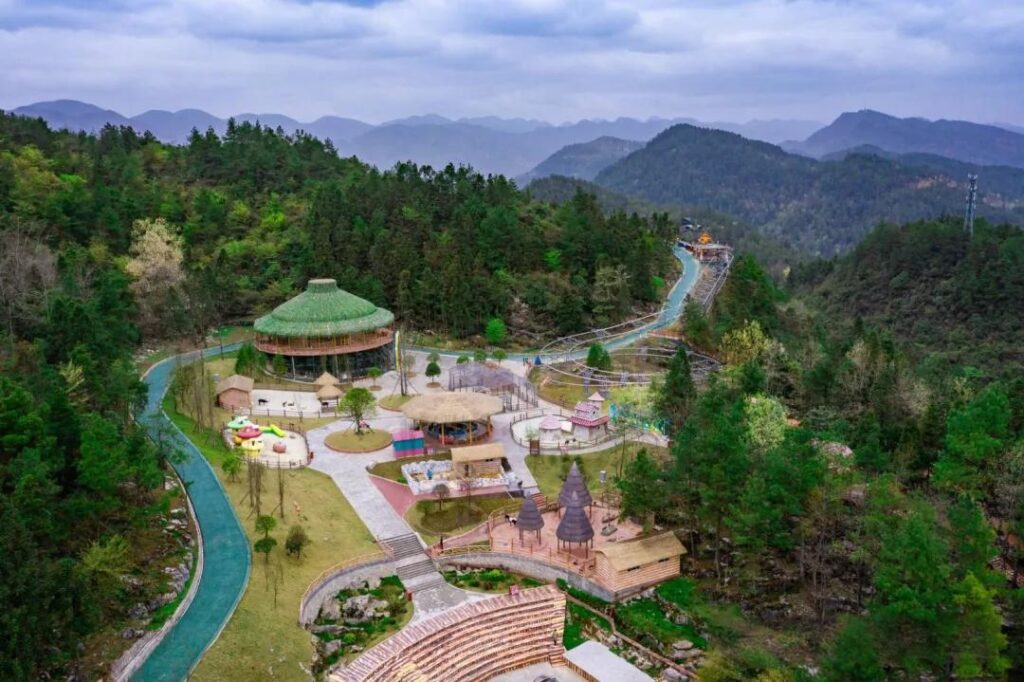
The scenic area covers an area of more than 300 acres, and mainly plans to fly to the clouds, travel alone, wind in the jungle, extreme speed in the forest, squirrel tribe, cute pet park, jungle flying and other amusement projects. Among them, “traveling alone” is the first track-type amusement project to land in inland China, and “cute pet park” is an interactive viewing project with more than 30 kinds of cute pets. The park is the only large-scale mountain parent-child interactive amusement product in southwest China that integrates vacation and leisure, entertainment and adventure, and popular science research. It is an example of the in-depth practice of the concept of “green water and green mountains are gold and silver mountains”. It will be successfully established as a national 4A-level tourist attraction in 2022.
8、Nanyaojie Revolutionary Base Scenic Area
The Nanyaojie Revolutionary Base Scenic Area is located in Nanyaojie Town, Youyang County, and is the junction of one province, one city and five counties in the Chongqing-Guizhou border area. During the arduous revolutionary years, the Red Third Army led by He Long, Guan Xiangying and others established the Qiandong Special Zone with Nanyaojie as the military command center, creating favorable conditions for the Red Third Army and the Red Sixth Army to join forces. The Nanyaojie Revolutionary Old Area is a classic national red tourism scenic spot, located in the Wuling Mountain tourism circle and the hinterland of Wuling Mountain. It is an important node from Chongqing to Hubei, Hunan and Guizhou.
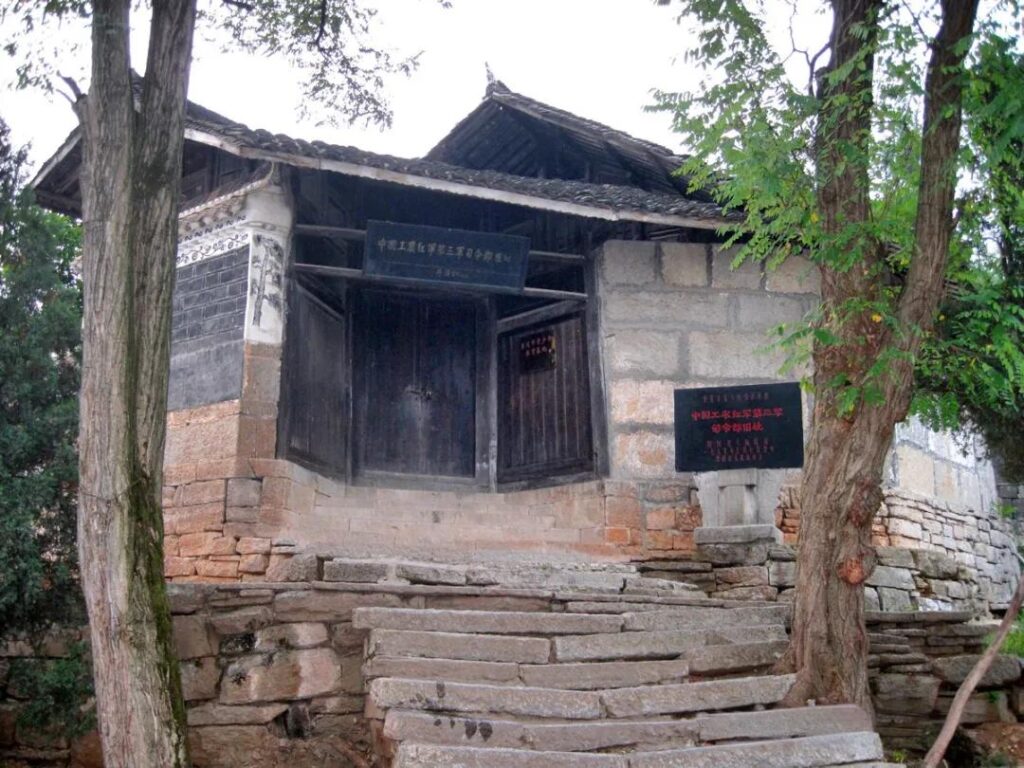
Nanyaojie has many red sites and they are well preserved. There are 56 well-preserved revolutionary historical relics, including the former site of the Red Third Army Headquarters, which is a national cultural relic protection unit; the former site of He Long’s activist meeting, Comrade He Long’s residence, the battle site of Dam Temple, the Red Army Hospital, the Red Army University, the Political Department of the Red Third Army, the Red Third Army Propaganda Team, the site of the establishment of the Nanyaojie Township Soviet, and the Ten Major Political Programs, which are 9 key cultural relic protection units in Chongqing.
In 1934, the Second and Sixth Red Army Corps held a meeting to celebrate their reunion in Nanyaojie, which effectively supported the Central Red Army’s strategy and the Long March. Nanyaojie truly records the history of the people in the Soviet area and the Red Third Army in carrying out cultural construction, organizational construction, institutional construction and political power construction during the Agrarian Revolution, and is a precious historical heritage in the history of party building and army building.
9、Red Stone Forest
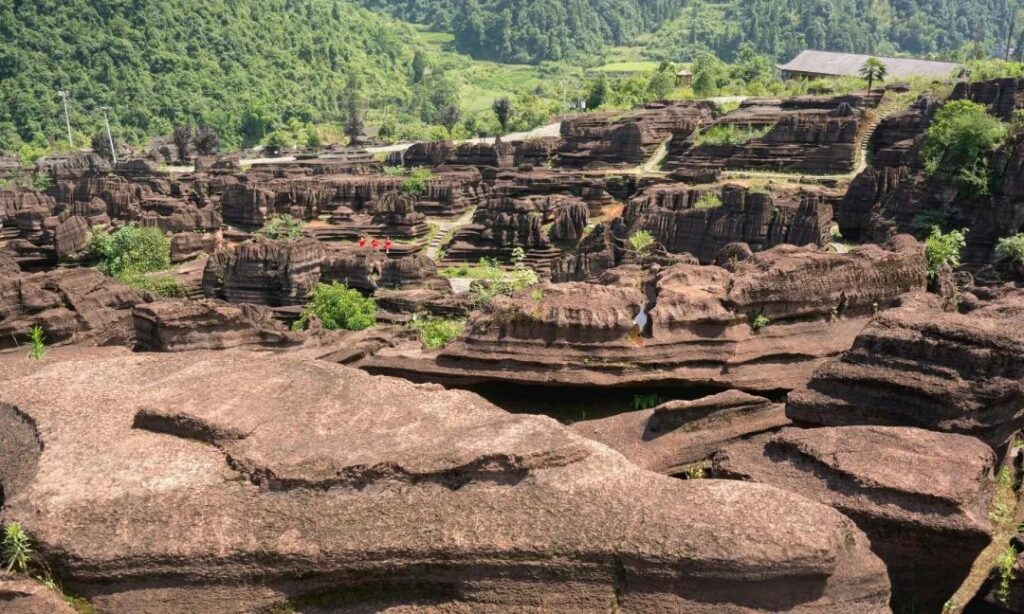
The Red Stone Forest is located on a vast red stone ridge between Qiangqiang Village, Mawang Town, Youyang Autonomous County, and Youshuihe Town in the hinterland of Wuling Mountain in southeastern Chongqing. It is a red karst karst landform and cliff canyon formed by the 470-530 million-year-old Cambrian-Ordovician sedimentary carbonate rock, which has been differentiated, leached and dissolved through crustal movement. It has a myriad of forms, unique appearance, elegant connotation and stubborn exterior; it is breathtaking. Step into the Red Stone Forest. It’s like walking into a magical and dreamy world! The magical fossils and peculiar appearance of the Red Stone Forest make the viewers curious and eager to explore the ancient world. The Red Stone Forest Belt is dominated by karst landforms, canyon landforms, and stratigraphic profiles, with deep red and dark purple colors and various landscapes. It has unique tourism appreciation, cultural aesthetics and geological scientific research experience value. The Stone Forest Belt is located on the right bank of the picturesque Youshui River, starting from Maoertan (a small place name) in the second group of Jiangxiwan Village and ending at Xialazhai (a small place name) in the fourth group of Jiangxiwan Village, with a total length of about 2 kilometers. In the core area of Maoertan, the stone forest covering an area of about 2,000 mu is stacked layer by layer with unique shapes.
10、Houxi Ancient Town
Houxi Ancient Town has a long history. It was under the jurisdiction of Wuling County in the Han Dynasty. During the Shaoxing period of the Southern Song Dynasty, Youyang Xuanwei Envoy was established, which belonged to Youxi of Jiuxi Shibadong. The local people are simple and honest, and there are rich cultural relics above and below the ground. Important cultural relics include Houxi Hanging Coffin Burial, the Tomb of General Bai Zongguan, the Gong Family Chastity Archway, Houxi Wanshou Palace, and the Tujia Baishou Hall.
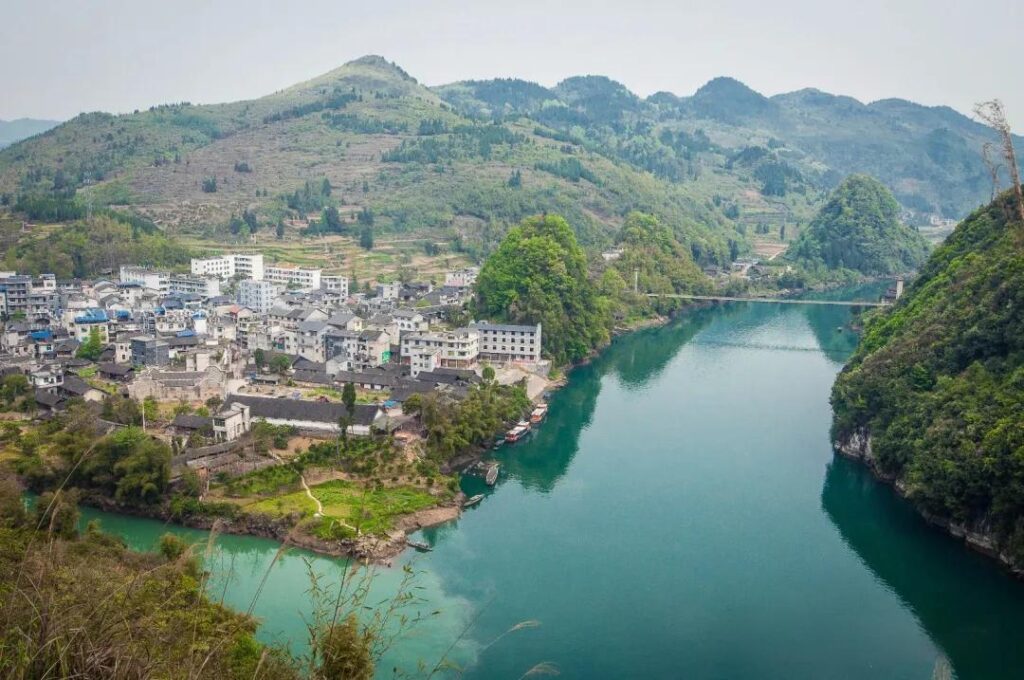
Houxi Ancient Town is beautiful, with beautiful scenery, long pond scenery, clear water and picturesque mountains, strange rocks and peaks. It is known as the Little Lijiang River. The green Youshui River flows by the town, and the mountains on both sides of the Youshui River are beautiful. The Sanwu Mountain next to the town is reflected in the river, which has the charm of Guilin landscape. When cruising in the river, you can clearly see the deep river bottom. The boatmen sing the long-standing Houxi fisherman’s song, and the melodious tune ripples in the valley and on the water. It is like a picture of a happy and contented life in a paradise.

